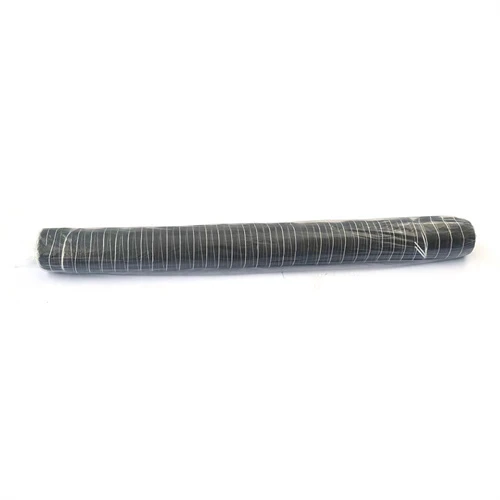-
 Afrikaans
Afrikaans -
 Albanian
Albanian -
 Amharic
Amharic -
 Arabic
Arabic -
 Armenian
Armenian -
 Azerbaijani
Azerbaijani -
 Basque
Basque -
 Belarusian
Belarusian -
 Bengali
Bengali -
 Bosnian
Bosnian -
 Bulgarian
Bulgarian -
 Catalan
Catalan -
 Cebuano
Cebuano -
 China
China -
 Corsican
Corsican -
 Croatian
Croatian -
 Czech
Czech -
 Danish
Danish -
 Dutch
Dutch -
 English
English -
 Esperanto
Esperanto -
 Estonian
Estonian -
 Finnish
Finnish -
 French
French -
 Frisian
Frisian -
 Galician
Galician -
 Georgian
Georgian -
 German
German -
 Greek
Greek -
 Gujarati
Gujarati -
 Haitian Creole
Haitian Creole -
 hausa
hausa -
 hawaiian
hawaiian -
 Hebrew
Hebrew -
 Hindi
Hindi -
 Miao
Miao -
 Hungarian
Hungarian -
 Icelandic
Icelandic -
 igbo
igbo -
 Indonesian
Indonesian -
 irish
irish -
 Italian
Italian -
 Japanese
Japanese -
 Javanese
Javanese -
 Kannada
Kannada -
 kazakh
kazakh -
 Khmer
Khmer -
 Rwandese
Rwandese -
 Korean
Korean -
 Kurdish
Kurdish -
 Kyrgyz
Kyrgyz -
 Lao
Lao -
 Latin
Latin -
 Latvian
Latvian -
 Lithuanian
Lithuanian -
 Luxembourgish
Luxembourgish -
 Macedonian
Macedonian -
 Malgashi
Malgashi -
 Malay
Malay -
 Malayalam
Malayalam -
 Maltese
Maltese -
 Maori
Maori -
 Marathi
Marathi -
 Mongolian
Mongolian -
 Myanmar
Myanmar -
 Nepali
Nepali -
 Norwegian
Norwegian -
 Norwegian
Norwegian -
 Occitan
Occitan -
 Pashto
Pashto -
 Persian
Persian -
 Polish
Polish -
 Portuguese
Portuguese -
 Punjabi
Punjabi -
 Romanian
Romanian -
 Russian
Russian -
 Samoan
Samoan -
 Scottish Gaelic
Scottish Gaelic -
 Serbian
Serbian -
 Sesotho
Sesotho -
 Shona
Shona -
 Sindhi
Sindhi -
 Sinhala
Sinhala -
 Slovak
Slovak -
 Slovenian
Slovenian -
 Somali
Somali -
 Spanish
Spanish -
 Sundanese
Sundanese -
 Swahili
Swahili -
 Swedish
Swedish -
 Tagalog
Tagalog -
 Tajik
Tajik -
 Tamil
Tamil -
 Tatar
Tatar -
 Telugu
Telugu -
 Thai
Thai -
 Turkish
Turkish -
 Turkmen
Turkmen -
 Ukrainian
Ukrainian -
 Urdu
Urdu -
 Uighur
Uighur -
 Uzbek
Uzbek -
 Vietnamese
Vietnamese -
 Welsh
Welsh -
 Bantu
Bantu -
 Yiddish
Yiddish -
 Yoruba
Yoruba -
 Zulu
Zulu
Durable and Stylish Sunshade Net for Your Outdoor Spaces and Garden Privacy
The Benefits and Importance of Sunshade Nets
In today’s world, the increasing awareness of environmental issues and the need for efficient resource management has led to the search for innovative solutions in agriculture, horticulture, and even in our backyards. One such solution that has gained popularity is the use of sunshade nets. These versatile materials serve a myriad of functions, helping to protect plants, reduce heat exposure, and enhance agricultural productivity.
Sunshade nets, also known as shade cloths, are typically made from high-density polyethylene or similar materials, which block a certain percentage of sunlight while allowing air and moisture to pass through. The percentage of shade provided can vary, with options ranging from 30% to as high as 90%, depending on the specific needs of the plants or crops being shielded. This adaptability makes sunshade nets an invaluable resource for growers.
One of the primary benefits of using sunshade nets is the protection they offer against excessive sunlight. In regions with intense sunlight, young plants are particularly vulnerable to sunburn and stress, which can hinder their growth. By blocking harmful rays, sunshade nets help mitigate thermal stress and create a more favorable microclimate. This not only aids in the healthy development of plants but also enhances their yield and overall productivity.
Moreover, sunshade nets play a crucial role in regulating temperature and humidity levels. During hot and dry conditions, these nets can significantly lower the ambient temperature around the plants. This cooling effect is particularly beneficial in areas where high temperatures can lead to crop failure. By maintaining a more stable environment, sunshade nets can help extend the growing season and improve harvests.
sunshade net

In addition to temperature control, sunshade nets also act as a barrier against adverse weather conditions, such as strong winds and heavy rains. For example, they can help reduce the impact of harsh hailstorms, which can devastate crops in mere minutes. By providing a protective layer, sunshade nets can safeguard delicate plants from physical damage, increasing their chances of survival.
Another significant advantage of using sunshade nets is their effectiveness in pest management. The nets can act as a physical barrier, preventing insects and birds from reaching the plants. This is particularly important for organic growers who need to minimize chemical usage. By reducing pest intrusion, sunshade nets can help maintain plant health and vitality without relying on harmful pesticides.
Furthermore, sunshade nets are environmentally friendly and sustainable. They are durable, often lasting several seasons with appropriate care, which means fewer resources are used for replacements. In addition, many sunshade nets are recyclable, thus reducing the overall environmental impact. Their use not only benefits agricultural practices but also contributes to a more sustainable landscape.
The aesthetic appeal of sunshade nets is another factor that cannot be overlooked. With various colors and styles available, they can enhance the appearance of gardens and outdoor spaces. A well-placed sunshade net can create a cozy and inviting atmosphere, providing not just functionality but also beauty.
In conclusion, sunshade nets are an essential tool in modern agriculture, offering numerous benefits that positively impact plant growth, yield, and sustainability. Their ability to protect against excessive sun exposure, regulate temperature and humidity, manage pests, and withstand adverse weather conditions makes them a must-have for anyone looking to cultivate healthy plants. As more people become aware of their advantages, we can expect to see an increasing adoption of sunshade nets in diverse settings, from large farms to residential gardens. Investing in sunshade nets means investing in the future of sustainable agriculture and beautiful outdoor spaces.
-
Shipping Plastic Bags for Every NeedNewsJul.24,2025
-
Safety Netting: Your Shield in ConstructionNewsJul.24,2025
-
Plastic Mesh Netting for Everyday UseNewsJul.24,2025
-
Nylon Netting for Every UseNewsJul.24,2025
-
Mesh Breeder Box for Fish TanksNewsJul.24,2025
-
Expanded Steel Mesh Offers Durable VersatilityNewsJul.24,2025











